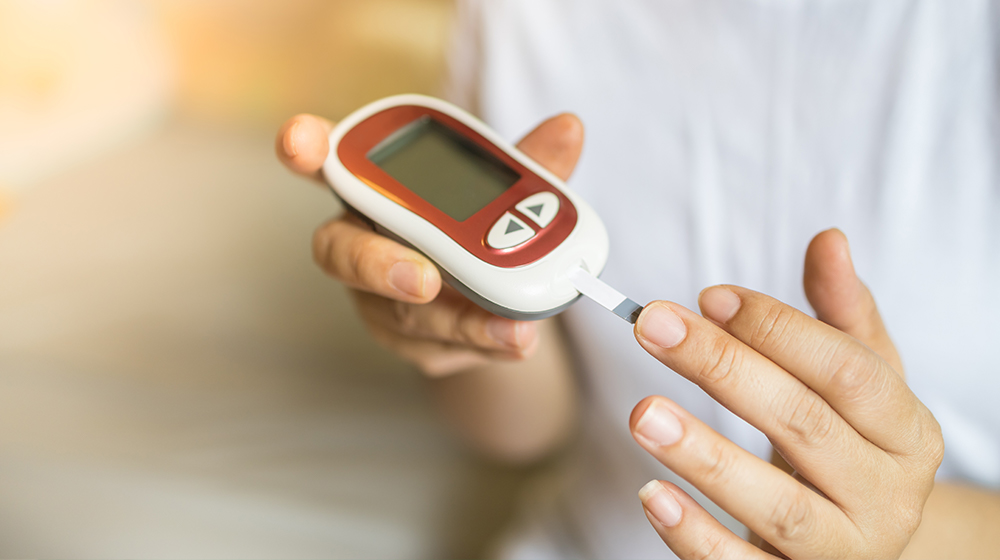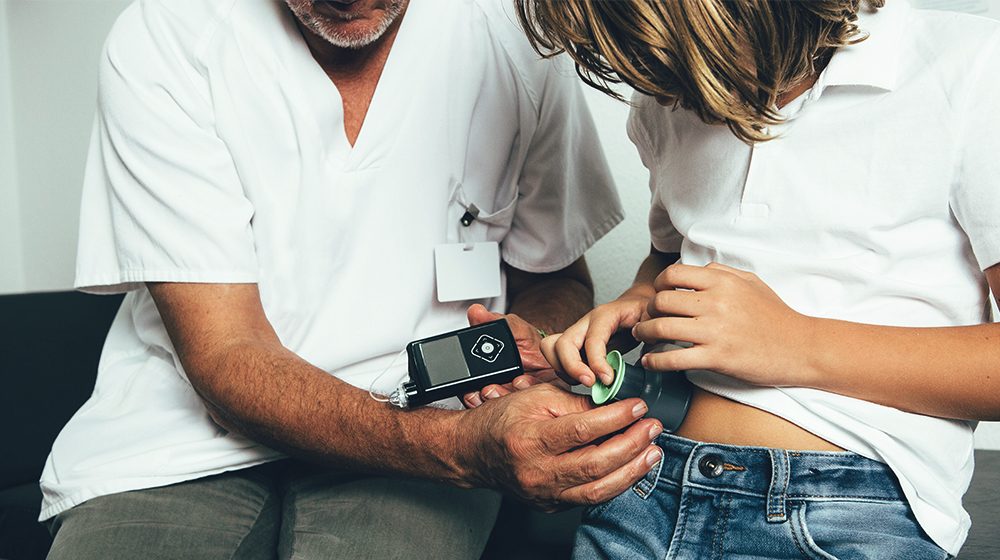According to the Centers for Disease Control and Prevention (CDC), there were more than 30.3 million diagnosed cases of diabetes in the U.S. in 2015, and more than 100 million Americans are living with diabetes or prediabetes.
While there is currently no cure, active research is being done, including studies by ProtoKinetix principal investigators to uncover potential treatment options and provide more hope to more patients.
Continue reading to learn about the difference between Type 1 and Type 2 diabetes and ProtoKinetix’s ongoing quest to cure and better manage both forms.
What is diabetes?
The National Institute of Diabetes and Digestive and Kidney Diseases describes diabetes as, “a disease that occurs when your blood glucose, also called blood sugar, is too high.” Blood glucose comes from the foods you eat and serves as the body’s main source of energy. To transform glucose into energy, our bodies rely on a hormone produced in the pancreas known as insulin. If our bodies don’t properly produce or utilize insulin, glucose can stay in our blood and cause health challenges over time.
Similarities and differences between Type 1 and Type 2
With Type 1 diabetes, the body does not produce enough insulin on its own. Typically, children and young adults are diagnosed with Type 1 diabetes and can only manage the condition with regular insulin injections daily.
Type 2 diabetes often develops over time, with most cases emerging in patients around the age of 45, but the condition can present itself as early as childhood. With Type 2 diabetes, the body still produces insulin but that insulin is ignored by the other organs. Often linked to obesity, inflammation, physical inactivity and conditions such as high blood pressure, Type 2 diabetes can usually be managed with diet, exercise and lifestyle updates. In some cases, insulin and insulin sensitizers can be provided to prevent the other organs from ignoring the insulin signal.
Less common forms of diabetes include gestational diabetes, a condition that develops in some women during pregnancy, monogenic diabetes, a form of diabetes inherited through a gene mutation and cystic fibrosis-related diabetes.
Who can be affected?
Anyone can be diagnosed with diabetes, regardless of age, gender or lifestyle. Those with a family history of diabetes or existing health problems, such as high blood pressure, are more likely to develop the condition, and lifestyle behaviors, such as physical inactivity, can increase your chances of developing Type 2. Individuals living with prediabetes or who experienced gestational diabetes during pregnancy are also more likely to be affected.
Diabetes symptoms, complications and long-term effects
Diabetes is itself a challenging illness, but it is also a disease that lends itself to other chronic or acute injuries. Diabetics are more prone to heart attacks, strokes, heart failure, kidney failure, blindness, vascular dementia, and other diseases caused by the deterioration of critical cells, nerves and organs.
There are two diabetes complications in particular that ProtoKinetix researchers have focused their efforts and attention to help resolve:
Injuries in the lower limbs
Patients with Type 1 diabetes can’t heal the same way as individuals who metabolize glucose normally. In our lower limbs and the tips of our toes, for example, high blood glucose levels can damage blood vessels and stop blood flow (ischemia), causing ulcers on the skin.
When a diabetes patient has an ulcered foot, their nerves that would normally fire signals to protect that injury are not working properly, which often causes neuropathic pain and continued injuries. Due to the high glucose and slowed healing, ulcers are more prone to infection. Diabetes also weakens the immune system’s ability to fight infections. In worst case scenarios, we see diabetics losing their lower limbs to amputation due to the damage caused by such injuries over the course of the illness.
Deterioration in the eyes
The next most common complication for patients with diabetes is dryness or deterioration of the eyes. When our bodies are not properly metabolizing glucose, our eyes can ulcer and become damaged without the ability to heal. Behind the eye is a network of vessels. The retina, rods, cones and blood vessels are all energy dependent, and the deterioration of these areas can eventually lead to blindness.
Complications by the numbers
According to the National Institute of Diabetes and Digestive and Kidney Diseases:
- About 15% of diabetics will experience foot ulcers in their lifetime
- About 60% of all amputations are a result of diabetes
- 30% of people over 40 with diabetes will experience some degree of retinopathy
The science behind Type 1 and Type 2 diabetes
In order to heal an injury, cells move through our vessels to clean up the debris, and this takes energy. When there is too much glucose in our blood, we have sugar modified proteins floating around, which can cause damage to our inner vessels over time. When those vessels fail, we stop delivering blood to our organs. If you think of healing as an energy dependent process, diabetes creates an environment where our bodies can’t heal, and at the same, patients are at a greater risk of injury.
Investing in a potential cure: how AAGP® could help
There is currently no cure for diabetes, but we believe our anti-aging glycopeptide, AAGP®, may be the essential link to the successful treatments of tomorrow.
Helping with the causes of diabetes
While there is immense opportunity in the realm of diabetes research, ProtoKinetix is focused on assisting in exploration of a potential cure for Type 1 diabetes via islet cell transplants in the pancreas. The Shapiro Group, led by Dr. James Shapiro, has been working with the most unstable diabetes patients to determine how AAGP® may keep donor cells alive and allow for successful islet cell transplants. In these studies, islet cells are taken from donors, protected with AAGP® and then transplanted into patients with Type 1 diabetes to help stabilize them.
Addressing the consequences of diabetes
Other active research includes studies led by Dr. Kevin Gregory-Evans of The Evans Group to overcome the ocular side-effects associated with diabetes, such as the common issue of dry eye disease or severe issues like diabetic retinopathy. For diabetic patients who experience retinal damage and vision loss related to diabetes, AAGP® may be used to help regenerate retinal cells and improve patient vision over time.
Review our research pipeline to learn more about the status of our active research.
Explore investment opportunities
The research exploring the potential for AAGP® as a diabetes treatment option and companion product for regenerative medicine has been extremely promising thus far, but to continue our investigations, we need the support of dedicated investors. If you are interested in investing in this potential, please talk to your broker or contact the team at ProtoKinetix. This is an incredible opportunity to be involved in the next great medical discovery, and we hope you’ll join us.



